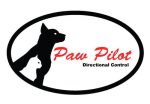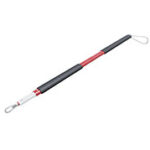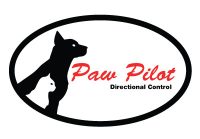PawPilot
A navigational control leash for a visually impaired animal.


Watch!
See PawPilot in action. This 3D animated video will provide a detailed look at the features and benefits of this invention.
Purpose
The invention is a navigational control leash for a visually impaired animal. It takes the shape of a white cane with a telescoping tubular body. The cane can be held or secured to a pet parent or dog walker using a wrist strap or hand grips for control. A swivel eyebolt snap tip secures the leash to a pet’s collar or harness. The device is adjustable in length to accommodate the varying heights of an animal and their human companion. With PawPilot, guiding visually impaired animals has never been safer, easier, or more convenient.

The Problem
Blind pets have a unique need for directional control when in unfamiliar environments.
It is very important for a human companion to keep them from bumping into unseen objects or falling from unseen ledges.

The Solution
… Luckily now, there’s PawPilot!
Contact Us
Contact us NOW to learn about manufacturing, retail, wholesale, distribution, or licensing opportunities for PawPilot.
-
White Cane with a Telescoping Tubular Body
-
Features Wrist Strap or Hand Grips
-
Rigid Structure for Control
-
Swivel Eyebolt Snap Tip Secures the Leash to a Collar or Harness
-
Adjustable To Accommodate the Heights of the User and the Animal
-
Also Very Effective When Used as a Training Tool for Puppies/Pets Who Need Additional Control Not Afforded by Flexible Leashes
Story Behind the Invention

Inventor Sharron Sanders of Silverthorne, Colorado, has designed a navigational control leash for a visually impaired animal.
With two decades of experience in pet care, Sharron recognized a distinct need among visually impaired pets navigating unfamiliar environments. She observed that these animals required more than just love and care – they needed directional guidance to avoid collision with unseen obstacles and to prevent them from accidentally tumbling off unknown ledges. In turn, she was inspired to create PawPilot!
But how does it work? The invention takes the shape of a white cane with a telescoping tubular body. The cane can be held or secured to a pet parent or dog walker using a wrist strap or hand grips for control. A swivel eyebolt snap tip secures the leash to a collar or harness. The device is adjustable in length to accommodate the varying heights of an animal and their human companion. Now, guiding visually impaired animals has never been safer, easier, or more convenient.


